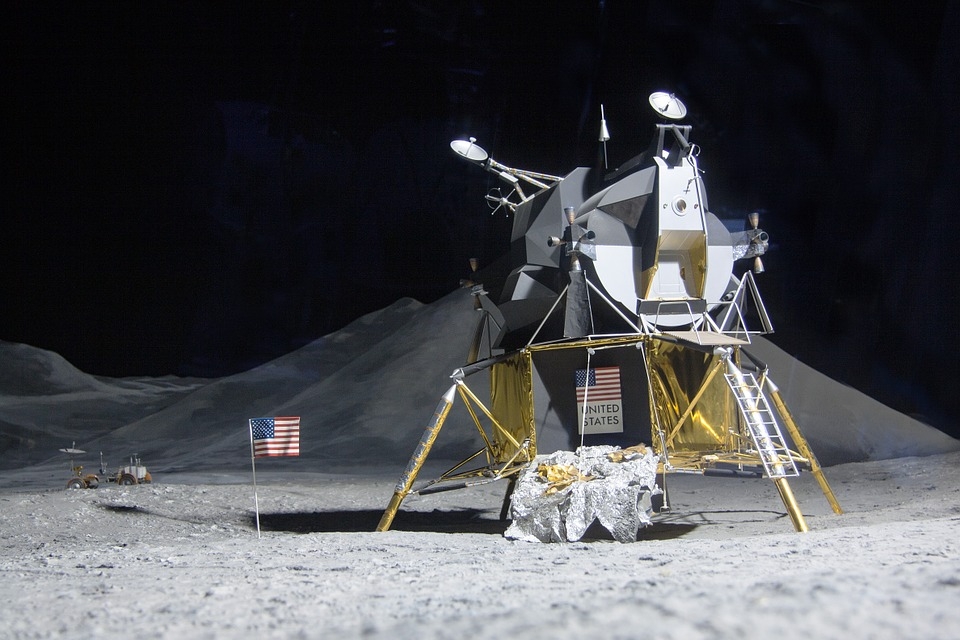Neil Armstrong and Buzz Aldrin made history as the first two men to set foot on the surface of the moon back in 1969. Recently, in an interview with Professor Brian Cox, Aldrin revealed that there was one aspect of the Apollo 11 mission that was completely out of their hands.
Express reports that Aldrin shared the aspect of the iconic Apollo 11 mission that neither him, Armstrong, nor fellow astronaut Michael Collins, could not control. In an interview at the Science Museum, Aldrin shared that they had no control over piloting the Saturn V rocket outside of Earth’s orbit and that it was completely up to the agency’s computer programming. “You’re not piloting anything, you’re along for the ride,” said Aldrin.
However, he did note that there was still something they could do in case something went wrong. “There’s a way you could do some steering, nobody has ever done it,” added the astronaut. “There is that provision with the end controller, that if the guidance from the engine started to veer off, you could possibly get it straightened away, then separate.”
Aldrin also explained how the Apollo 11 mission was different from the previous space mission he went on, with the Gemini spacecraft that he refers to as a “Pilot’s spacecraft.” “Apollo was so programmed in its pathway, that it wasn’t just the sort of thing you could move around. Everything was very well-orchestrated to be part of the total flight plan.”
Back in 2013, Armstrong made another revelation regarding the iconic moon mission. The late astronaut shared that their moon landing may have prevented further tensions between the United States and the Soviet Union at the time, who was in the midst of the Space Race - a part of the Cold War. “It was the ultimate peaceful competition, USA versus USSR,” said Armstrong. “I’ll not assert that it was a diversion which prevented a war, but nonetheless it was a diversion.”
Armstrong went on to explain how this mission eventually benefited both sides after years of competing against each other in a ballistic missile-based nuclear arms race that came after World War II.



 Tatahouine: 'Star Wars meteorite' sheds light on the early Solar System
Tatahouine: 'Star Wars meteorite' sheds light on the early Solar System  What is minoxidil, the anti-balding hair growth treatment? Here’s what the science says
What is minoxidil, the anti-balding hair growth treatment? Here’s what the science says  Spacesuits need a major upgrade for the next phase of exploration
Spacesuits need a major upgrade for the next phase of exploration  The mystery of consciousness shows there may be a limit to what science alone can achieve
The mystery of consciousness shows there may be a limit to what science alone can achieve  Synthetic human embryos let researchers study early development while sidestepping ethical and logistical hurdles
Synthetic human embryos let researchers study early development while sidestepping ethical and logistical hurdles  Archeoastronomy uses the rare times and places of previous total solar eclipses to help us measure history
Archeoastronomy uses the rare times and places of previous total solar eclipses to help us measure history  If life exists on Jupiter’s moon Europa, scientists might soon be able to detect it
If life exists on Jupiter’s moon Europa, scientists might soon be able to detect it  Why some people don't trust science – and how to change their minds
Why some people don't trust science – and how to change their minds  Black hole, neutron star or something new? We discovered an object that defies explanation
Black hole, neutron star or something new? We discovered an object that defies explanation  Could a telescope ever see the beginning of time? An astronomer explains
Could a telescope ever see the beginning of time? An astronomer explains  Eggs from men, sperm from women: how stem cell science may change how we reproduce
Eggs from men, sperm from women: how stem cell science may change how we reproduce  The brightest object in the universe is a black hole that eats a star a day
The brightest object in the universe is a black hole that eats a star a day  Why now is the time to address humanity’s impact on the moon
Why now is the time to address humanity’s impact on the moon  Dark energy is one of the biggest puzzles in science and we're now a step closer to understanding it
Dark energy is one of the biggest puzzles in science and we're now a step closer to understanding it  Why is the universe ripping itself apart? A new study of exploding stars shows dark energy may be more complicated than we thought
Why is the universe ripping itself apart? A new study of exploding stars shows dark energy may be more complicated than we thought 






























